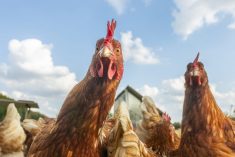Saskatchewan ranchers dealing with drought being offered provincial wildlife land to graze their livestock as a temporary measure.
About 100,000 acres of Fish and Wildlife Development Fund lands will be made available to drought-affected producers via applications on a first-come, first-served basis starting Monday (June 22), the province said in a release Friday.
Grazing on these lands will be available until Sept. 15, the province added.
“Opening these lands to cattle producers will give them much-needed access to pasture land for their livestock,” Agriculture Minister Bob Bjornerud said. “We appreciate the efforts of the ministry of environment to assist cattle producers during this challenging period.”
Read Also

U.S. livestock: Cattle strength continues
Cattle futures on the Chicago Mercantile Exchange were stronger on Friday, hitting fresh highs to end the week.
“Grazing is an important tool to maintain quality wildlife habitat,” Environment Minister Nancy Heppner said in the same release. “In addition to assisting producers, opening wildlife lands to grazing in a controlled manner will promote vegetation management and relieve stress on the producers’ pastures.”
Producers will be responsible for providing any required temporary fencing or water improvements, the province said Friday. The same grazing lease fees that apply to Crown ag land will apply to the Fish and Wildlife Fund lands.
Producers in areas affected by drought who are interested in grazing particular Fish and Wildlife Development Fund lands should contact their local environment ministry office, the province said. Eligible lands can be viewed on the ministry’s website.
The Saskatchewan Stock Growers Association on Friday hailed the province’s decision. “The most immediate concern facing producers in drought regions is water supply shortages and looming forage supply shortages for this upcoming winter,” SSGA past-president Ed Bothner said in a separate release.
“The opening of this additional grazing land will help to extend the grazing season, which will help alleviate the supply-and-demand pressure on forage supplies,” said Bothner, a producer from Beechy, about 125 km northeast of Swift Current.















